Addressing Visual Impairment in Higher Education: Integrating Instructional Design and Digital Resources
Annabel Emore
Abstract
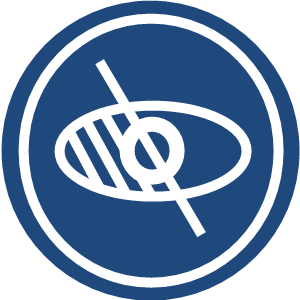 Visual impairment presents significant accessibility challenges in higher education, affecting students’ ability to engage fully with instructional materials and participate in learning activities. This paper identifies the impact of visual impairment on teaching and learning in higher education and proposes solutions through the integration of instructional design strategies and digital teaching and learning resources. By leveraging technology and inclusive design principles, educators can create accessible learning environments that accommodate visually impaired students and enhance their educational experience.
Visual impairment presents significant accessibility challenges in higher education, affecting students’ ability to engage fully with instructional materials and participate in learning activities. This paper identifies the impact of visual impairment on teaching and learning in higher education and proposes solutions through the integration of instructional design strategies and digital teaching and learning resources. By leveraging technology and inclusive design principles, educators can create accessible learning environments that accommodate visually impaired students and enhance their educational experience.
Introduction
Visual impairment encompasses a range of visual disabilities, including low vision and blindness, which impede students’ ability to see printed materials, images, and digital screens. These challenges can significantly hinder their ability to engage with standard educational content, participate in classroom activities, and complete assignments. Students with visual impairments face substantial barriers in higher education, where the learning environment often relies heavily on visual content. These barriers include difficulty accessing textbooks, reading lecture slides, and using online learning platforms, leading to frustration, decreased academic performance, and a sense of isolation.
Students with disabilities are at greater risk in higher education, facing significantly higher dropout rates and considerably lower graduation rates than their nondisabled peers (Lombardi et al., 2016). Their academic and social challenges can be overwhelming, leading to disengagement and attrition. As stated by Becker & Palladino (2016), dropout rates increase when students with disabilities feel unsupported by their institution. This lack of support can manifest in various ways, such as insufficient accommodations, lack of understanding from faculty, and inadequate access to assistive technologies.
Students with visual impairments encounter unique educational barriers not experienced by many other students. They may have visible and invisible needs, as Gierdowski & Galanek (2020) highlighted. For instance, while some students may require braille materials or screen readers, others might need enlarged text or high-contrast visuals. The diversity of these needs requires a flexible and individualized approach to support. Furthermore, the social aspect of their education is equally important; students with visual impairments may feel isolated if they cannot participate fully in group activities or discussions.
This chapter explores the challenges visually impaired students face and proposes instructional design strategies and digital resources to enhance accessibility in higher education. Educators can create a more inclusive educational experience by leveraging technology and innovative teaching methods to ensure that all students, regardless of their visual abilities, have equal opportunities to succeed academically and participate fully in the educational community.
Impact of Visual Impairment on Teaching and Learning
Access to Instructional Resources
Power (2024) asserts that educators frequently distribute resources to students by sharing PDF files, including articles, textbook excerpts, novel passages, and other materials, making PDFs a common method for sharing educational content. However, visually impaired students may encounter numerous obstacles in accessing traditional instructional materials. These materials, such as textbooks, slides, and handouts, are predominantly visual, rendering them inaccessible without proper adaptations. Although digital content has the potential to be more accessible, it often lacks the appropriate formatting for screen readers and other assistive technologies, which are essential for visually impaired students to engage with the material. Moreover, classroom activities, such as group work, often rely heavily on visual cues, posing additional challenges. These barriers can significantly hinder the academic success and engagement of visually impaired students, highlighting the need for inclusive instructional design and accessible digital resources in higher education.
The barriers visually impaired students face can lead to decreased academic performance and engagement. Without access to the same information as their peers, these students may struggle to keep up with coursework, participate in discussions, and complete assignments. This disparity can result in lower grades and diminished motivation, impacting their overall educational experience and success.
Technological Barriers
Academic Performance
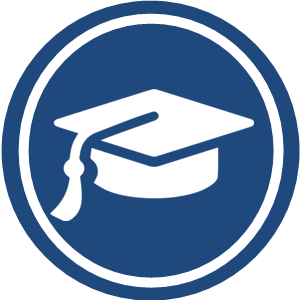 Visually impaired students often face academic performance challenges in higher education due to accessibility barriers. These students frequently encounter difficulties in keeping pace with coursework and completing assignments within the expected timelines. The delay or incomplete access to course materials, especially digital resources that lack proper formatting for screen readers or other assistive technologies, contributes to these struggles. Consequently, the inability to access timely information may lead to lower grades as visually impaired students find themselves at a disadvantage in meeting academic expectations. In a study conducted by Reed & Curtis (2010), 59 % of higher education students with a visual impairment, reported occasional difficulty in accessing appropriate accommodations due to delays in providing alternate formats of materials, inaccessible materials, unreliable notetakers, or teaching staff denying accommodations like audio recordings.
Visually impaired students often face academic performance challenges in higher education due to accessibility barriers. These students frequently encounter difficulties in keeping pace with coursework and completing assignments within the expected timelines. The delay or incomplete access to course materials, especially digital resources that lack proper formatting for screen readers or other assistive technologies, contributes to these struggles. Consequently, the inability to access timely information may lead to lower grades as visually impaired students find themselves at a disadvantage in meeting academic expectations. In a study conducted by Reed & Curtis (2010), 59 % of higher education students with a visual impairment, reported occasional difficulty in accessing appropriate accommodations due to delays in providing alternate formats of materials, inaccessible materials, unreliable notetakers, or teaching staff denying accommodations like audio recordings.
Moreover, the presence of accessibility barriers can significantly impact the motivation and engagement levels of visually impaired students. When educational resources are not readily accessible in formats suitable for their needs, students may experience frustration and reduced interest in participating actively in classroom activities and discussions. The reliance on others for accessing information or encountering repeated barriers can undermine their confidence and enthusiasm for learning, ultimately affecting their overall academic performance and educational experience in higher education settings.
Assessment Challenges
 Visually impaired students face significant challenges with assessments that heavily rely on visual components. Efforts to broaden access to higher education include outreach in schools, special admissions programs, and ongoing support for diverse student success. However, there’s limited attention on assessment, which may hinder diverse students’ academic achievement and overall success in higher education (Moriña, 2017, p. 1).
Visually impaired students face significant challenges with assessments that heavily rely on visual components. Efforts to broaden access to higher education include outreach in schools, special admissions programs, and ongoing support for diverse student success. However, there’s limited attention on assessment, which may hinder diverse students’ academic achievement and overall success in higher education (Moriña, 2017, p. 1).
Tasks such as interpreting graphs, diagrams, and charts can be particularly inaccessible without suitable adaptations or alternative formats. This limitation may result in visually impaired students being unable to complete these assessments accurately or independently, impacting their overall academic performance and grades. Furthermore, the emphasis on visual cues in assessments may overlook the diverse ways in which visually impaired students can demonstrate their comprehension and mastery of course content. Educators can use methods that allow students to demonstrate their knowledge and skills through means other than visual interpretation. By implementing these approaches, educators can ensure that visually impaired students have equitable opportunities to showcase their academic capabilities without the inherent disadvantages posed by visually dependent assessments.
Support and Resources
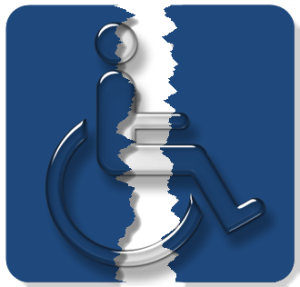 Visually impaired students often face challenges due to insufficient support and resources in higher education settings. Institutions frequently lack adequate assistance tailored to the needs of visually impaired students, such as accessible learning materials and necessary accommodations. This shortfall can impede students’ ability to access course content effectively and participate fully in academic activities, potentially impacting their overall educational experience and success. Reed et al. (2003) found that most Canadian colleges and universities offer accommodations for students with disabilities, but the extent and types of accommodations vary widely among institutions, often tailored to the prevalent disabilities among their student populations. This variability may mean that accommodations designed for the majority may not adequately meet the needs of students with visual impairments, who constitute a smaller proportion of registered students with disabilities.
Visually impaired students often face challenges due to insufficient support and resources in higher education settings. Institutions frequently lack adequate assistance tailored to the needs of visually impaired students, such as accessible learning materials and necessary accommodations. This shortfall can impede students’ ability to access course content effectively and participate fully in academic activities, potentially impacting their overall educational experience and success. Reed et al. (2003) found that most Canadian colleges and universities offer accommodations for students with disabilities, but the extent and types of accommodations vary widely among institutions, often tailored to the prevalent disabilities among their student populations. This variability may mean that accommodations designed for the majority may not adequately meet the needs of students with visual impairments, who constitute a smaller proportion of registered students with disabilities.
Moreover, there is a noticeable deficit in the training provided to educators regarding the creation and delivery of accessible content. Many educators may lack the necessary knowledge and skills to format materials in ways that accommodate students with visual impairments, perpetuating barriers to learning and limiting the effectiveness of educational approaches aimed at inclusivity. Additionally, the availability of assistive technologies and support services specifically designed to aid visually impaired students is often limited, further complicating their ability to navigate the academic environment independently and access the resources necessary for success in higher education.
Learning Management Systems (LMS)
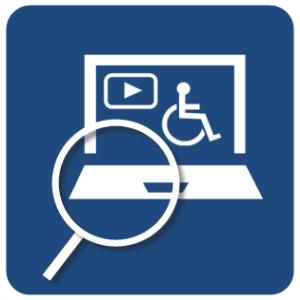 Learning Management Systems (LMS) are intended to be accessible through the Web Content Accessibility Guidelines (WCAG) 2.0 by the W3C. Despite these standards, many LMS platforms remain inaccessible to visually impaired students (Nascimento et al., 2019). Challenges include inaccessible navigation, non-compatible screen readers, and unclear layouts. According to American computer network research, 98% of websites were incompatible with screen reading software commonly used by the visually impaired, such as JAWS and ZoomText (Dabi & Golga, 2023). Such barriers can significantly impact the educational experience of visually impaired students, limiting their engagement with digital course content and interactions within the LMS environment.
Learning Management Systems (LMS) are intended to be accessible through the Web Content Accessibility Guidelines (WCAG) 2.0 by the W3C. Despite these standards, many LMS platforms remain inaccessible to visually impaired students (Nascimento et al., 2019). Challenges include inaccessible navigation, non-compatible screen readers, and unclear layouts. According to American computer network research, 98% of websites were incompatible with screen reading software commonly used by the visually impaired, such as JAWS and ZoomText (Dabi & Golga, 2023). Such barriers can significantly impact the educational experience of visually impaired students, limiting their engagement with digital course content and interactions within the LMS environment.
Proposed Solutions to the Issue through the Integration of Instructional Design Strategies
Enhancing Accessibility in Higher Education through Instructional Design Strategies
 Addressing the challenges faced by visually impaired students in higher education requires a multifaceted approach that integrates instructional design strategies. Educators must undergo comprehensive training programs focused on creating accessible digital content. This includes using accessible PDF formats, incorporating alternative text for images, ensuring compatibility with screen readers, and providing transcripts for audio and video materials. McNicholl et al. (2021) highlight that assistive technology can enhance functionality, diminish activity limitations, foster social inclusion, and boost participation in education, the labor market, and civic life. Therefore, institutions should invest in assistive technologies and create comprehensive support systems to ensure students can fully access and benefit from these resources.
Addressing the challenges faced by visually impaired students in higher education requires a multifaceted approach that integrates instructional design strategies. Educators must undergo comprehensive training programs focused on creating accessible digital content. This includes using accessible PDF formats, incorporating alternative text for images, ensuring compatibility with screen readers, and providing transcripts for audio and video materials. McNicholl et al. (2021) highlight that assistive technology can enhance functionality, diminish activity limitations, foster social inclusion, and boost participation in education, the labor market, and civic life. Therefore, institutions should invest in assistive technologies and create comprehensive support systems to ensure students can fully access and benefit from these resources.Implementing Universal Design for Learning (UDL) Principles
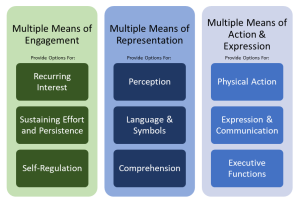 To ensure equal opportunities and inclusion for students with disabilities, higher education institutions should integrate inclusive education principles and Universal Design for Learning (UDL) into their policies and practices (Moriña, 2017, p.5). UDL emphasizes providing multiple means of representation, action and expression, and engagement to accommodate diverse learners. For visually impaired students, this approach could involve offering materials in Braille or audio formats, allowing oral presentations as alternatives to written assignments, and incorporating tactile learning tools in laboratory settings. As asserted by Dabi & Golga (2023), people who are visually impaired desire access to information in formats that suit their preferences, enabling effective engagement in daily activities such as civic participation, understanding rights, making informed decisions, reducing uncertainty, and using information for work, learning, and leisure pursuits. By embracing UDL principles, educators can create flexible learning environments that cater to diverse learning needs, ensuring equitable opportunities for all students to succeed.
To ensure equal opportunities and inclusion for students with disabilities, higher education institutions should integrate inclusive education principles and Universal Design for Learning (UDL) into their policies and practices (Moriña, 2017, p.5). UDL emphasizes providing multiple means of representation, action and expression, and engagement to accommodate diverse learners. For visually impaired students, this approach could involve offering materials in Braille or audio formats, allowing oral presentations as alternatives to written assignments, and incorporating tactile learning tools in laboratory settings. As asserted by Dabi & Golga (2023), people who are visually impaired desire access to information in formats that suit their preferences, enabling effective engagement in daily activities such as civic participation, understanding rights, making informed decisions, reducing uncertainty, and using information for work, learning, and leisure pursuits. By embracing UDL principles, educators can create flexible learning environments that cater to diverse learning needs, ensuring equitable opportunities for all students to succeed.
Promoting Inclusive Assessment Practices
 Tai et al (2021) defined Inclusive assessment as creating fair and effective assessment methods that allow all students to demonstrate their full knowledge and abilities. Assessment practices can make disabled students feel “different,” “special,” and “lesser” compared to their peers, especially when they are visibly singled out, such as staying behind after exams for extra time, and this reflects ableism, as these assessments are based on the ideal, able student (Nieminen, 2024, p. 842). For this reason, allowing students to demonstrate their knowledge through various assessment methods is essential in accommodating diverse abilities, including those of visually impaired students. Assessments should offer options such as oral presentations, written reports, or multimedia projects, enabling students to showcase their strengths effectively. Engaging students through interactive activities like online discussions and collaborative projects, designed with non-visual elements, fosters motivation and active participation among visually impaired students.
Tai et al (2021) defined Inclusive assessment as creating fair and effective assessment methods that allow all students to demonstrate their full knowledge and abilities. Assessment practices can make disabled students feel “different,” “special,” and “lesser” compared to their peers, especially when they are visibly singled out, such as staying behind after exams for extra time, and this reflects ableism, as these assessments are based on the ideal, able student (Nieminen, 2024, p. 842). For this reason, allowing students to demonstrate their knowledge through various assessment methods is essential in accommodating diverse abilities, including those of visually impaired students. Assessments should offer options such as oral presentations, written reports, or multimedia projects, enabling students to showcase their strengths effectively. Engaging students through interactive activities like online discussions and collaborative projects, designed with non-visual elements, fosters motivation and active participation among visually impaired students.
Potential Digital Teaching and Learning Resources
Enhancing Accessibility with Assistive Technologies
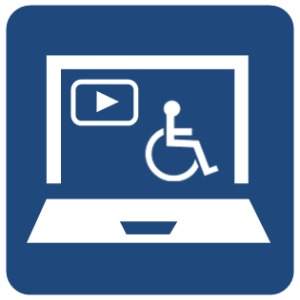 To improve the education and involvement of students with visual impairments in inclusive settings, it is essential to provide materials in accessible formats and/or utilize assistive technology” (Kisanga & Kisanga, 2022). Incorporating assistive technologies into instructional design is essential for supporting visually impaired students in higher education. Tools such as screen readers like JAWS and NVDA convert text and visual content into synthesized speech or Braille, offering alternative means of accessing information. Text-to-speech software such as Kurzweil 3000 and Read & Write provide auditory alternatives by reading digital text aloud and offering features like text highlighting for improved comprehension. Magnification software such as ZoomText assists students with low vision by enlarging text and images on screen, facilitating easier reading and navigation of digital materials.
To improve the education and involvement of students with visual impairments in inclusive settings, it is essential to provide materials in accessible formats and/or utilize assistive technology” (Kisanga & Kisanga, 2022). Incorporating assistive technologies into instructional design is essential for supporting visually impaired students in higher education. Tools such as screen readers like JAWS and NVDA convert text and visual content into synthesized speech or Braille, offering alternative means of accessing information. Text-to-speech software such as Kurzweil 3000 and Read & Write provide auditory alternatives by reading digital text aloud and offering features like text highlighting for improved comprehension. Magnification software such as ZoomText assists students with low vision by enlarging text and images on screen, facilitating easier reading and navigation of digital materials.
Creating Accessible Course Materials
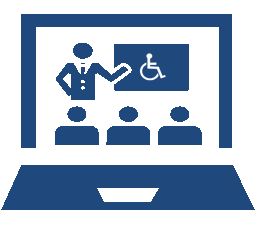 Creating accessible course materials is crucial for ensuring equitable access to education for visually impaired students. This involves formatting digital documents such as PDFs, Word files, and PowerPoint presentations for accessibility. Structuring documents with headings, lists, and tables makes them compatible with screen readers while including alt text descriptions for images and descriptive links enhances usability. Utilizing accessibility checkers within tools like Microsoft Office helps identify and correct accessibility issues, ensuring content is accessible to all students. Videos used in courses should include captions, transcripts, and audio descriptions to provide comprehensive accessibility for individuals (Kulkarni, 2019).
Creating accessible course materials is crucial for ensuring equitable access to education for visually impaired students. This involves formatting digital documents such as PDFs, Word files, and PowerPoint presentations for accessibility. Structuring documents with headings, lists, and tables makes them compatible with screen readers while including alt text descriptions for images and descriptive links enhances usability. Utilizing accessibility checkers within tools like Microsoft Office helps identify and correct accessibility issues, ensuring content is accessible to all students. Videos used in courses should include captions, transcripts, and audio descriptions to provide comprehensive accessibility for individuals (Kulkarni, 2019).
Ensuring Accessibility in Learning Management Systems (LMS)
 Learning management systems (LMS) are pivotal in delivering digital course content, and ensuring their accessibility is foundational to creating inclusive learning environments. LMS platforms such as Blackboard, Canvas, and Moodle should adhere to web accessibility standards like WCAG, offering features such as keyboard navigation and text alternatives for non-text content. Customizable interfaces that allow students to adjust settings such as text size and color schemes further enhance accessibility within the LMS. Providing alternative formats for course materials within the LMS ensures that visually impaired students can fully engage with digital content.
Learning management systems (LMS) are pivotal in delivering digital course content, and ensuring their accessibility is foundational to creating inclusive learning environments. LMS platforms such as Blackboard, Canvas, and Moodle should adhere to web accessibility standards like WCAG, offering features such as keyboard navigation and text alternatives for non-text content. Customizable interfaces that allow students to adjust settings such as text size and color schemes further enhance accessibility within the LMS. Providing alternative formats for course materials within the LMS ensures that visually impaired students can fully engage with digital content.
Conclusion
Addressing visual impairment in higher education demands a comprehensive integration of instructional design strategies and digital resources to ensure equitable access and promote inclusive learning environments. The challenges faced by visually impaired students, from inaccessible instructional materials to barriers in technology and assessment practices, underscore the urgency for proactive measures. By implementing Universal Design for Learning (UDL) principles, educators can cater to diverse learning needs, offering multiple avenues for representation and engagement.
Moreover, enhancing accessibility through assistive technologies like screen readers and text-to-speech software not only facilitates information access but also empowers students to participate fully in academic activities. Ensuring that learning management systems (LMS) comply with accessibility standards further supports inclusive education, providing customizable interfaces and alternative formats that accommodate varying visual needs. These efforts, combined with ongoing educator training and institutional support services, are pivotal in fostering an educational environment where all students, regardless of visual abilities, can thrive academically and contribute meaningfully to their academic communities.
References
Becker, S., & Palladino, J. (2016). Assessing faculty perspectives about teaching and working with students with disabilities. Journal of Postsecondary Education and Disability, 29(1), 65-82. https://files.eric.ed.gov/fulltext/EJ1107476.pdf
Dabi, G. K., & Golga, D. N. (2023). Digital inclusion: Lived experiences of students with visual impairment accessibility to web-based information in higher education institutions of Ethiopia. The British Journal of Visual Impairment, 0(0), https://doi.org/10.1177/02646196231187558
Gierdowski, D. C., & Galanek, J. (2020, June 1). ECAR study of the technology needs of students with disabilities, 2020 (Research report). Educause. https://www.educause.edu/ecar/research-publications/ecar-study-of-the-technology-needs-of-students-with-disabilities/2020/introduction-and-key-findings
Kisanga, S. E., & Kisanga, D. H. (2022). The role of assistive technology devices in fostering the participation and learning of students with visual impairment in higher education institutions in Tanzania. Disability and Rehabilitation: Assistive Technology, 17(7), 791–800. https://doi.org/10.1080/17483107.2020.1817989
Kulkarni, M. (2019). Digital accessibility: Challenges and opportunities. IIMB Management Review, 31(1), 91–98. https://doi.org/10.1016/j.iimb.2018.05.009
Lombardi, A., Murray, C., & Kowitt, J. (2016). Social support and academic success for college students with disabilities: Do relationship types matter? Journal of Vocational Rehabilitation, 44(1), 1–13. https://doi.org/10.3233/JVR-150776
McNicholl, A., Casey, H., Desmond, D., & Gallagher, P. (2021). The impact of assistive technology use for students with disabilities in higher education: A systematic review. Disability and Rehabilitation: Assistive Technology, 16(2), 130–143. https://doi.org/10.1080/17483107.2019.1642395
Moriña, A. (2017). Inclusive education in higher education: challenges and opportunities. European Journal of Special Needs Education, 32(1), 3–17. https://doi.org/10.1080/08856257.2016.1254964
Nascimento, M., Oliveira, T., Lima, N., Ramos, R., Silva, L., Oliveira, F., & Brandão, A. (2019). A learning management system accessible for visual, hearing and physical impairments. In Universal Access in Human-Computer Interaction. Theory, Methods and Tools (pp. 481–493). Springer International Publishing. https://doi.org/10.1007/978-3-030-23560-4_35
Nieminen, J. H. (2024). Assessment for Inclusion: rethinking inclusive assessment in higher education. Teaching in Higher Education, 29(4), 841–859. https://doi.org/10.1080/13562517.2021.2021395
Power, R. (2024). Are Your PDFs Accessible? In R. Power (Ed.), The ALT Text: Accessible Learning with Technology. Power Learning Solutions. ISBN 978-1-7390190-2-0. https://pressbooks.pub/thealttext/chapter/are-your-pdfs-accessible/
Reed, M., & Curtis, K. (2012). Experiences of students with visual impairments in Canadian higher education. Journal of Visual Impairment & Blindness, 106(7), 414–425. https://doi.org/10.1177/0145482X1210600704
Reed, M. J., Lund-Lucas, E., & O’Rourke, K. (2003). Standards of Practice in Postsecondary Special Needs Programming: Student and Administrator Opinion. Canadian Journal of Higher Education (1975), 33(2), 27–56. https://doi.org/10.47678/cjhe.v33i2.183431
Tai, J., Ajjawi, R., & Umarova, A. (2021). How do students experience inclusive assessment? A critical review of contemporary literature. International Journal of Inclusive Education, ahead-of-print(ahead-of-print), 1–18. https://doi.org/10.1080/13603116.2021.2011441
